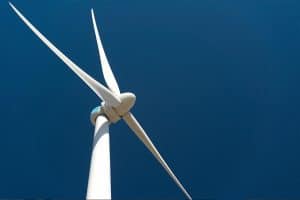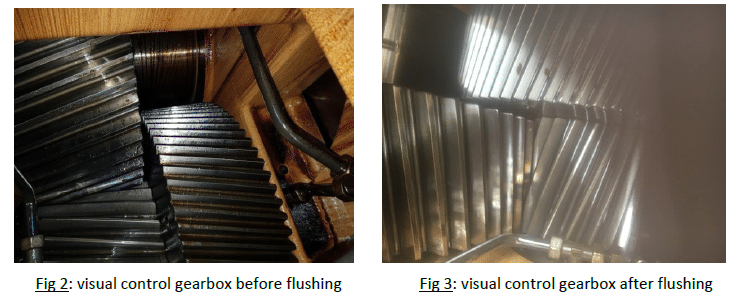
All gearboxes should observe the same rules, right? Not really.
Gearboxes require different types of oils based on the rotational speed of the gears, the type of the gears and the environment in which they are working. When we begin thinking about wind turbine gearboxes, there are a lot more factors to consider than these traditional ones for industrial gearboxes. Wind turbine gear oils have to perform in quite challenging environments and as such particular attention is paid to conditions such as wear, EP protection, water separation, air separation, detergency and oxidation.
Wind turbine gearboxes are not as easily accessible as industrial gearboxes. Offshore wind turbine gearboxes represent increased risks as compared to those onshore. As such, reliability and maintenance for these are critical. The oil condition monitoring of these gearboxes can alert users to early warning signals, abnormal working conditions and detection of oil degradation. Special attention must be paid to the planetary gears and bearings in these gearboxes due to the extreme operating conditions.
The average life of a wind turbine gear oil is around 5-6 years. When the oil is no longer deemed fit for use, there are two possible options usually followed. Either the oil is changed in combination with flushing or the oil is topped up with new oil to extend the life by 2-3 years. The latter is highly dependent on the condition of the oil regarding degradation and contamination. It has been noted that within the wind turbine industry, the flushing practice is not as widely used as it should and not as common.
Should wind turbine gearboxes be flushed?
The age old question of flushing is always present when changing the oil in any piece of equipment. For wind turbine gearboxes however, it is critical that these are flushed before new oil is placed into the system. Typically, when the used oil is drained from these gearboxes, 5-10% remains in the system and sump. This volume may seem insignificant but when new oil is added to the sump, it can easily contaminate it causing the new oil to become more susceptible to varnish. This in turn shortens the life expectancy of the new oil.
In an attempt to increase the typical oil life to 8-9 years, the condition monitoring program should work in tandem with the cleaning and flushing procedures for these gearboxes. There are three key components which must be observed:
- Flushing with solubility enhancer – this can solubilize the oxidation and degradation products ensuring that they are removed from the sump when the oil is drained. This guarantees that there are no previous deposits hence the new oil will not be contaminated nor become as susceptible to varnish.
- Chemical filtration – this removes and neutralizes any acids which may remain in the system. These acids can cause corrosion which can further impact the life of the oil and the equipment.
- Turbulent flushing – the Ocean Team Windcare (OTW) has developed flushing strategies based on high velocity and turbulent flushing to remove all corrosion products and yellow metal which may have remained in the gearbox.
The Ocean Team Windcare (OTW) has introduced a flushing concept which addresses maintenance shortfalls and improves overall expected economics by combining the three aforementioned aspects. This optimized oil flushing concept will allow wind turbine companies to become more sustainable and implement environmentally sound practices.
OTW’s Flushing procedure for Wind Turbine Gearboxes
The OTW team has developed a special method of flushing the cooling circuit for the gearbox in a wind turbine which removes degradation products. The cooling circuit for the oil in the wind turbine gearbox is firstly modified by an OTW developed flushing circuit. This adds dry air to the added low viscosity flushing oil and raises the pressure to a predetermined pressure limit in the cooling circuit. This rise in pressure leads to the compression of air added to the flushing liquid. As such, this enables a forceful release of pressure in the cooling circuit which creates the desired turbulence and turbulent flow in the system.
This turbulence allows for the cleaning of the inner walls and allows for the disturbance and lift of any contaminating wear and tear causing particles into the fluid. Hence, these particles can now be filtered out. This forceful release also creates induced sound waves particularly low frequency sound waves which aid in the turbulence effect. The flushing circuit has a built-in pressure relief valve to allow control of the pressure to ensure that the fragile systems are not damaged.
Field trial
Flushing was performed on a wind turbine gearbox using the OTW flushing method. Here are some specs on the system:
- Wind Turbine Power Output: 1MW
- Location: United Kingdom
- Wind Turbine volume: 350 Liters
- Gear oil type: ISO VG 320
- Oil Lifetime: 6 years
Oil sampling was performed, before, during and after the flushing intervention to monitor the condition of the gearbox. MPC (Membrane Patch Colorimetry ASTM D7843), RULER (Remaining Useful Life Evaluation Routine ASTM D6971) and Viscosity were performed. The following conclusions were made:
- Before Flushing: the MPC levels initially dropped indicating the effects of the solubility enhancer. Afterwards the values increased depicting the cleaning effect being experienced by the system where the deposits were now being dissolved into the oil. The filter was able to easily remove the deposits and increase the cleaning capacity of the oil.
- During Flushing: it was noted that the RULER number quickly declined when the flush was added to the system. Due to the presence of the released oxidation products and precursors to varnish (free radicals and peroxides), the antioxidants react immediately and are depleted. If new oil was placed into the system, this would significantly reduce its oil life.
- After Flushing: during the start-up and normal operation of the wind turbine gearbox, the MPC level remained stable. Additionally, the antioxidant level is also maintained and remains stable.

In essence, the flushing of a wind turbine gearbox is slightly more complex than that of an industrial gearbox. Particular attention must be paid to ensuring the process is sustainable and environmentally sound. This can be achieved through the use of solubility enhancers, chemical filtration and turbulent flushing in a practice defined by OTW. The costs involved for the failure of a wind turbine gearbox greatly outweighs the costs associated with performing sustainable and environmentally sound flushing practices.
